How Wu Zetian Became the Only Female Emperor in Chinese History
By DocuMyths2 | Feb 18, 2025Wu Zetian’s journey to becoming the only female emperor in Chinese history is nothing short of fascinating. Her cunning intelligence and political acumen allowed her to rise from a lowly concubine to the supreme ruler of the Tang Dynasty. This transformation not only reshaped the political landscape of China but also challenged the prevailing norms of gender roles in leadership.
Throughout her reign, she implemented significant reforms that influenced the cultural and religious fabric of the empire. Her ability to navigate the complexities of power, while also promoting social change, has made her a prominent figure worthy of examination. The story of Wu Zetian serves as an intriguing exploration of ambition, capability, and the quest for authority in a male-dominated society.
Key Takeaways
- Wu Zetian’s rise from concubine to emperor showcases her political skill and determination.
- She enacted reforms that transformed governance and societal norms during her reign.
- Her legacy continues to spark discussions about gender and power in historical contexts.
Early Life and Rise to Power
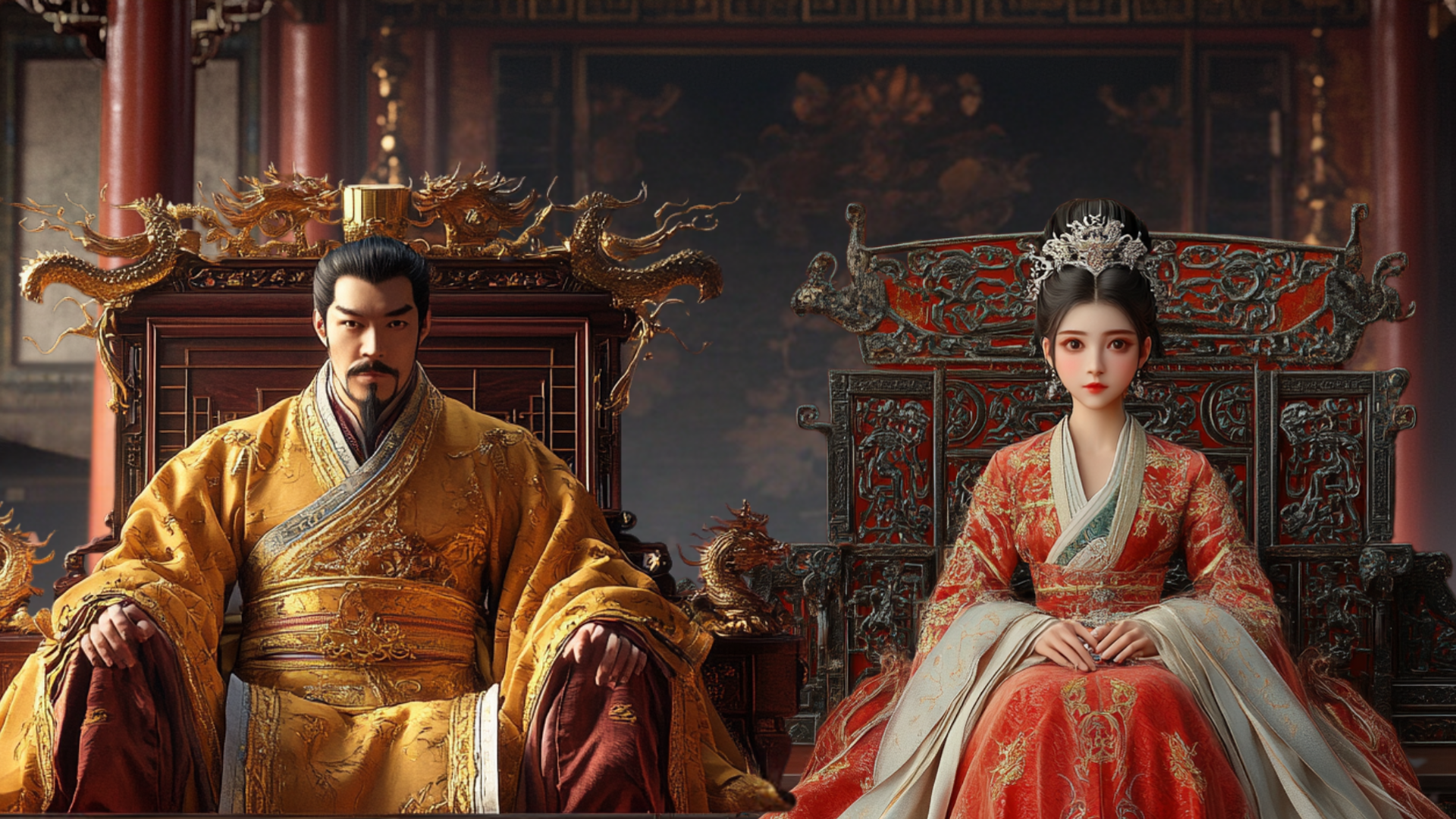
Wu Zetian's journey to becoming the only female emperor of China is marked by her noble beginnings, strategic marriage, and political acumen. Her rise involved significant relationships and calculated actions that positioned her favorably in a male-dominated society.
Noble Origins
Wu Zetian was born in 624 CE to a relatively affluent family in Shanxi province. Her father was a prefect, granting her a connection to the elite class. This background allowed her access to education, which was rare for women at the time.
Her upbringing instilled in her an ambition to navigate the political landscape effectively. From a young age, she was educated in poetry, literature, and philosophy, providing her with the tools necessary for future influence.
Marriage to Emperor Taizong
In her early twenties, Wu caught the eye of Emperor Taizong, the second emperor of the Tang dynasty. After the death of his chief wife, he made Wu his concubine. This was a significant turning point for her, as she entered the imperial court and gained considerable visibility.
During her time in the palace, she quickly adapted to the intrigues of court life. Wu's intelligence and wit impressed the emperor, placing her in a favorable position among the other concubines. Her relationship with Taizong allowed her to learn the intricacies of power dynamics firsthand.
Ascent to Empress Consort
After Taizong's death in 649 CE, Wu’s journey continued when she married his successor, Emperor Gaozong. This marriage further solidified her political influence. Initially, she held the title of "Empress Consort," but Wu began to assert her authority more openly.
As Empress Consort, she was not just a figurehead. Wu played a crucial role in governance by advising her husband and participating in state affairs. Her ability to navigate through the challenges of the court and manipulate political alliances contributed to her growing power, setting the stage for her future as the emperor.
Consolidation of Power
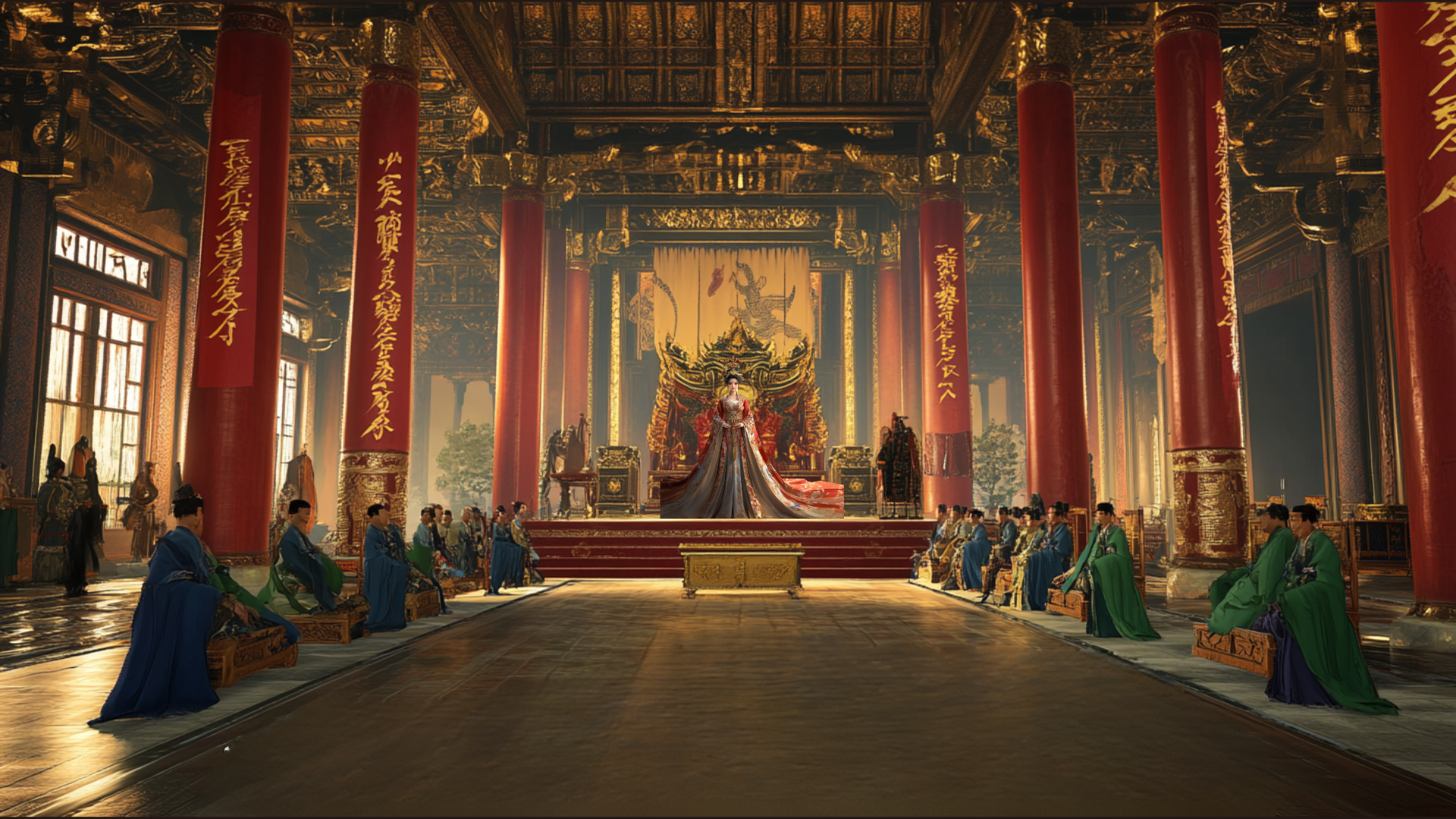
Wu Zetian's rise to power involved strategic political maneuvering, efficient administrative reforms, and a significant role as Empress Dowager and Regent. These actions not only consolidated her authority but also reshaped the Tang dynasty's political landscape.
Political Maneuvering
Wu Zetian skillfully navigated court politics to secure her position. Initially, she entered the court as a concubine of Emperor Taizong but later became the consort of his successor, Emperor Gaozong.
Using her connections, she eliminated rivals and gained favor. Wu leveraged her intelligence and charm, manipulating alliances among powerful officials. She also employed secret police to root out dissent, ensuring her rivals' lack of support or power. This ability to manipulate key players allowed her to rise beyond the expectations of her role.
Administrative Reforms
To strengthen her rule, Wu Zetian enacted significant administrative reforms. She established a merit-based civil service system, which aimed to reduce the influence of aristocratic families.
By promoting officials based on talent rather than status, she encouraged loyalty from those who would benefit from her system. Wu also implemented policies that improved agricultural productivity and tax collection. These reforms enhanced state revenue and secured support from the peasantry, further solidifying her position.
Empress Dowager and Regent
As Empress Dowager, Wu Zetian held substantial influence over her sons and their administrations. After Emperor Gaozong's death, she effectively ruled as Regent, acting on behalf of her sons.
She maintained control by placing her loyal supporters in key governmental positions. This enabled her to guide policies and decisions while appearing to allow her sons to rule. Wu also ensured that her lineage would continue to hold power by marrying her daughters off to influential families. This networking not only maintained her influence but also further solidified her authority in the court.
Reign as the Female Emperor
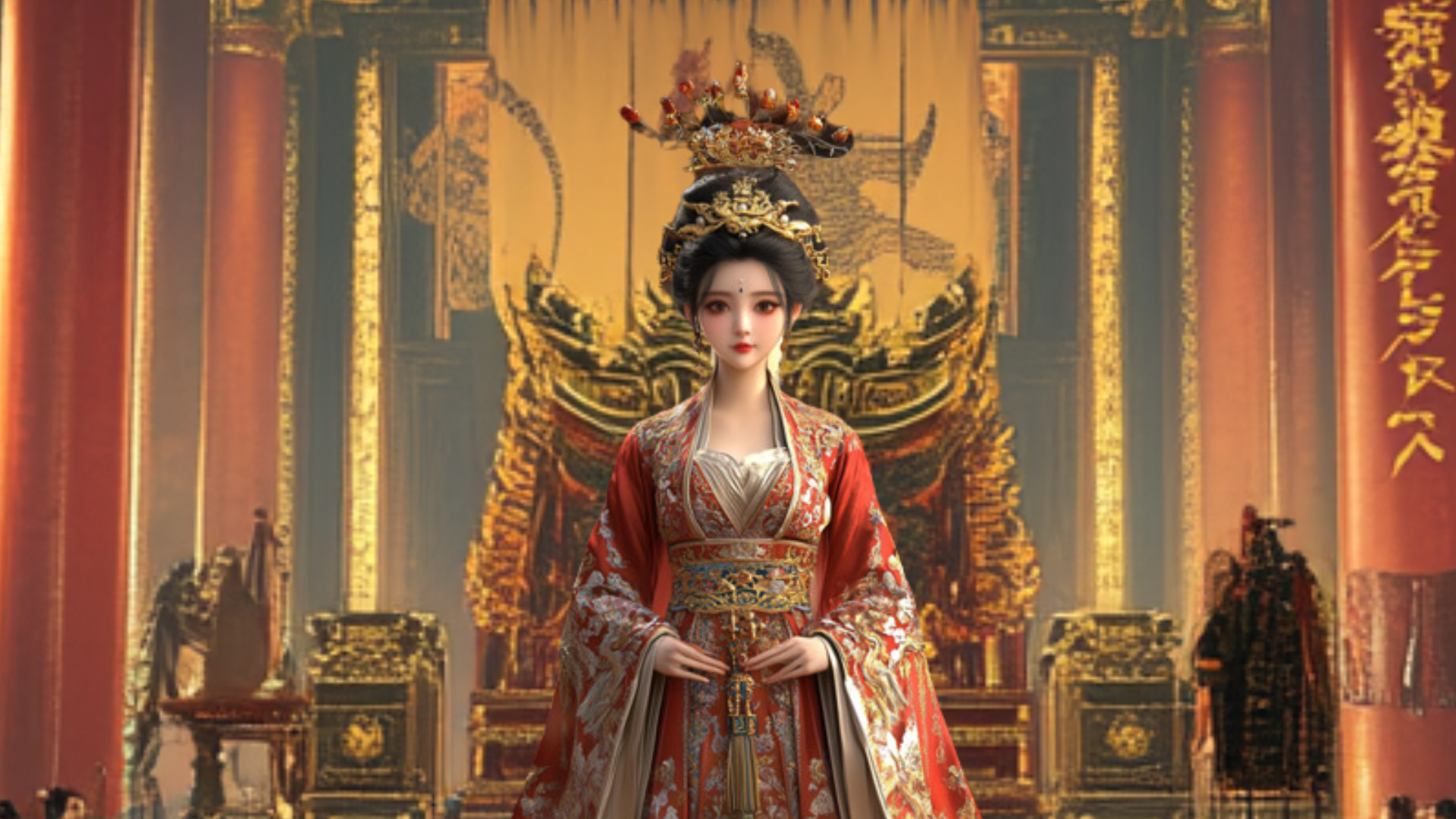
Wu Zetian's reign marked a significant shift in Chinese history. She focused on consolidating power, implementing progressive policies, and managing foreign relations to strengthen her rule.
Establishment of the Zhou Dynasty
In 690 CE, Wu Zetian declared the establishment of the Zhou Dynasty, breaking away from the Tang Dynasty. By naming her dynasty after the ancient Zhou, she aimed to legitimize her rule. This move was radical, as it was unprecedented for a woman to claim imperial authority. She even altered historical texts to emphasize her legitimacy, portraying herself as a capable ruler worthy of the title.
Domestic Policies
Wu Zetian implemented several domestic reforms that had lasting impacts. She promoted agricultural advancements and improved the welfare of peasants, which won her popular support. Educational reforms were also introduced, allowing more individuals to take civil service exams, thus diversifying the government. Her ambitious policies aimed to weaken aristocratic power while enhancing meritocracy, shifting the focus toward talent rather than lineage.
Foreign Relations
Wu Zetian's foreign relations were strategic and aimed at enhancing China's standing. She maintained interactions with Central Asian states to bolster trade routes, including the Silk Road. Furthermore, she sent military expeditions to secure borders and quell threats from neighboring tribes, notably the Tibetan Empire. Through diplomacy and force, she managed to project power beyond China's borders, showcasing her capabilities as a ruler and securing stability for her dynasty.
Cultural and Religious Influence

Wu Zetian strategically used cultural and religious elements to strengthen her rule and support her legitimacy. She engaged deeply with Buddhism and patronized the arts, which helped not only boost her image but also unify the empire under her leadership.
Buddhism Promotion
Wu Zetian was a staunch supporter of Buddhism. She promoted the faith as a state religion, which helped solidify her power among the people. Her reign saw the construction of numerous temples, including the famous Temple of the Goddess of Mercy.
This patronage allowed Buddhism to flourish, leading to greater public devotion. She also emphasized the role of Buddhist monks in society, making them advisers and influential figures. This connection strengthened her political standing and resonance with her subjects.
Literature and Art Patronage
During Wu's reign, literature and art received significant attention. She invited poets and artists to her court, fostering an atmosphere of creativity. This was crucial for establishing a cultural legacy that aligned with her vision.
Calligraphy and painting flourished, with many artists receiving her support. Wu even directed literary compositions that celebrated her rule. This artistic promotion not only glorified her achievements but also contributed to a rich cultural heritage that the Tang dynasty is known for today.
Legacy and Historical Impact
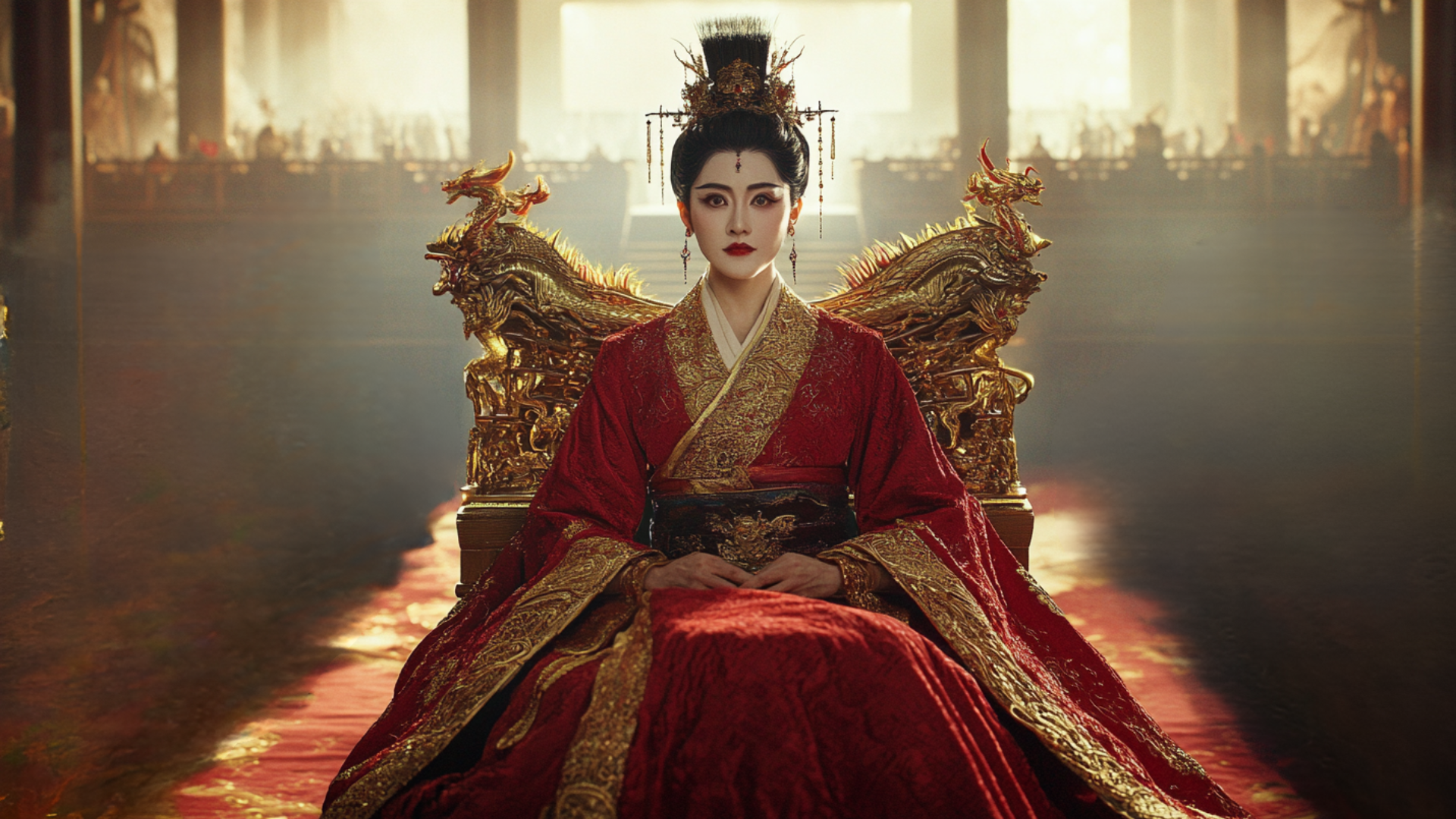
Wu Zetian's reign ended centuries ago, but her influence continues to resonate. She challenged traditional gender roles and established a unique legacy that keeps scholars and the public intrigued.
Historical Perceptions
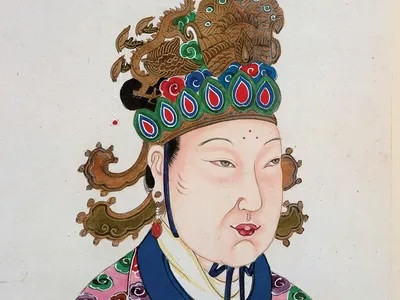
For many years, historical narratives depicted Wu Zetian in a negative light. She was often characterized as manipulative and ruthless, with emphasis on her rise to power through unconventional means.
In traditional Chinese history, her actions were frequently seen through a lens of cultural bias, which undervalued her achievements. This perception was influenced by the patriarchal society of the time, which often marginalized women in power.
However, some contemporaneous accounts noted her administrative skills and diplomatic prowess, recognizing that her rule brought stability and innovation. This duality in perception set the stage for a more complex discussion about her legacy.
Modern Reevaluation
Recent scholarship presents a more nuanced view of Wu Zetian. Modern historians are reexamining her reign, highlighting her contributions to governance and culture.
Wu Zetian's establishment of the meritocratic system in civil service examinations promoted talent over aristocratic birth. This shift impacted governance and set a precedent for future administrations.
Additionally, her promotion of Buddhism and the arts played a significant role in cultural development during the Tang Dynasty. Today, she is increasingly recognized as a powerful female figure who broke barriers, inspiring discussions about gender and leadership in history.